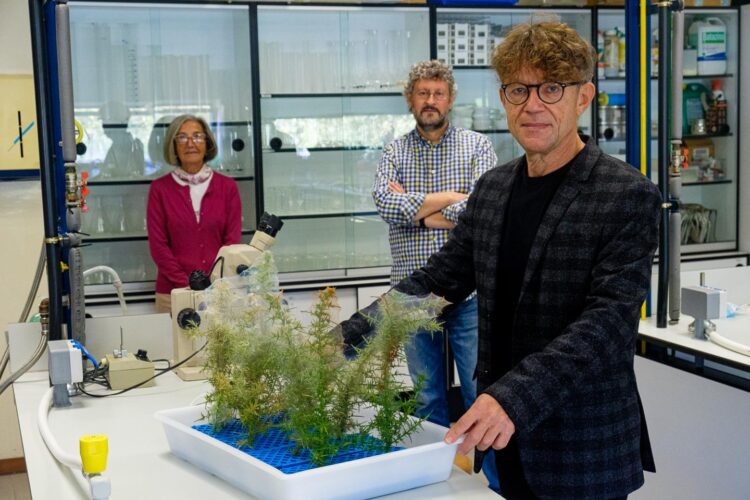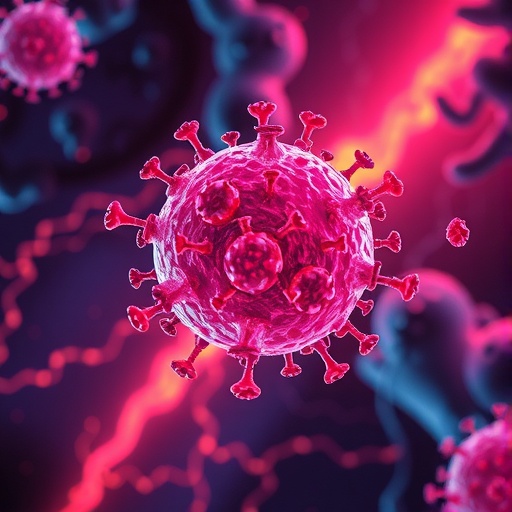Developed from the silk produced by the Tetranychus lintearius mite

Credit: University of La Rioja
An international team of researchers has developed a new nanomaterial from the silk produced by the Tetranychus lintearius mite. This nanomaterial has the ability to penetrate human cells without damaging them and, therefore, has “promising biomedical properties”.
The Nature Scientific Reports journal has published an article by an international scientific team led by Miodrag Grbi?, a researcher from the universities of La Rioja (Spain), Western Ontario (Canada) and Belgrade (Serbia), in its latest issue entitled ‘The silk of gorse spider mite Tetranychus lintearius represents a novel natural source of nanoparticles and biomaterials’ (https:/
In it, researchers from the Murcian Institute for Agricultural and Food Research and Development (IMIDA), the Barcelona Institute of Photonic Sciences, the University of Western Ontario (Canada), the University of Belgrade (Serbia) and the University of La Rioja describe the discovery and characterisation of this mite silk. They also demonstrate its great potential as a source of nanoparticles and biomaterials for medical and technological uses.
The interest of this new material, which is more resistant than steel, ultra flexible, nano-sized, biodegradable, biocompatible and has an excellent ability to penetrate human cells without damaging them, lies in its natural character and its size (a thousand times smaller than human hair), which facilitates cell penetration.
These characteristics are ideal for use in pharmacology and biomedicine since it is biocompatible with organic tissues (stimulates cell proliferation without producing toxicity) and, in principle, biodegradable due to its protein structure (it does not produce residues).
Researcher Miodrag Grbi?, who heads the international group that has researched this mite silk, highlights “its enormous potential for biomedical applications, as thanks to its size it is able to easily penetrate both healthy and cancerous human cells”, which makes it ideal for transporting drugs in cancer therapies, as well as for the development of biosensors to detect pathogens and viruses.
THE ‘RIOJANO BUG’
Tetranychus lintearius is an endemic mite from the European Atlantic coast that feeds exclusively on gorse (Ulex europaeus). It is around 0.3 mm in size, making it smaller than the comma on a keyboard, while the strength of its silk is twice as high as standard spider silk.
It is a very rare species that has only been found so far in the municipality of Valgañón (La Rioja, Spain), in Sierra de la Demanda. It was located thanks to the collaboration of Rosario García, a botanist and former dean of the Faculty of Science and Technology at the University of La Rioja, which is why researchers call it “the Rioja bug” (“El Bicho Riojano”).
The resistance of the silk produced by Tetranychus lintearius is twice that of spider silk, a standard material used for this type of research, and stronger than steel. It also has advantages over the fibres secreted by the silkworm due to its higher Young’s modulus, its electrical charge and its smaller size. These characteristics, along with its lightness, make it a promising natural nanomaterial for technological uses.
This finding is the result of work carried out by the international group of researchers led by Miodrag Grbi?, who sequenced the genome of the red spider Tetranychus urticae in 2011, publishing the results in Nature: https:/
Unlike the red spider (Tetranychus urticae), the gorse mite (Tetranychus lintearius) produces a large amount of silk. It has been reared in the laboratories of the Department of Agriculture and Food of the University of La Rioja, under the care of Professor Ignacio Pérez Moreno, allowing research to continue. Red spider silk is difficult to handle and has a lower production rate.
###
Media Contact
Miodrag Grbic
[email protected]
Original Source
https:/
Related Journal Article
http://dx.





